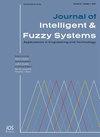Unravelling the gait and balance: A novel approach for detecting depression in young healthy individuals
IF 1
4区 计算机科学
Q3 COMPUTER SCIENCE, ARTIFICIAL INTELLIGENCE
引用次数: 0
Abstract
Depression is a prevalent mental health disorder that affects people of all ages and origins; therefore, early detection is essential for timely intervention and support. This investigation proposes a novel method for detecting melancholy in young, healthy individuals by analysing their gait and balance patterns. In order to accomplish this, a comprehensive system is designed that incorporates cutting-edge technologies such as a Barometric Pressure Sensor, Beck Depression Inventory (BDI), and t-Distributed Stochastic Neighbour Embedding (t-SNE) algorithm. The system intends to capitalize on the subtle motor and physiological changes associated with melancholy, which may manifest in a person’s gait and balance. The Barometric Pressure Sensor is used to estimate variations in altitude and vertical velocity, thereby adding context to the evaluation. The mood states of participants are evaluated using the BDI, a well-established psychological assessment instrument that provides insight into their emotional health. Integrated and pre-processed data from the Barometric Pressure Sensor, BDI responses, and gait and balance measurements. The t-SNE algorithm is then used to map the high-dimensional data into a lower-dimensional space while maintaining the local structure and identifying underlying patterns within the dataset. The t-SNE algorithm improves visualization and pattern recognition by reducing the dimensionality of the data, allowing for a more nuanced analysis of depression-related markers. As the proposed system combines objective physiological measurements解开步态和平衡:一种检测年轻健康个体抑郁症的新方法
抑郁症是一种普遍存在的精神健康障碍,影响所有年龄和出身的人;因此,早期发现对于及时干预和支持至关重要。这项研究提出了一种新的方法来检测忧郁的年轻,健康的个体通过分析他们的步态和平衡模式。为了实现这一目标,设计了一个综合系统,该系统结合了尖端技术,如气压传感器、贝克凹陷量表(BDI)和t分布随机邻居嵌入(t-SNE)算法。该系统旨在利用与忧郁相关的细微运动和生理变化,这些变化可能表现在一个人的步态和平衡上。气压传感器用于估计高度和垂直速度的变化,从而为评估添加上下文。参与者的情绪状态使用BDI进行评估,这是一种完善的心理评估工具,可以深入了解他们的情绪健康状况。集成和预处理数据从气压传感器,BDI响应,步态和平衡测量。然后使用t-SNE算法将高维数据映射到低维空间,同时保持局部结构并识别数据集中的底层模式。t-SNE算法通过降低数据的维度来改善可视化和模式识别,从而允许对抑郁症相关标记进行更细致的分析。由于该系统结合了客观的生理测量
本文章由计算机程序翻译,如有差异,请以英文原文为准。
求助全文
约1分钟内获得全文
求助全文
来源期刊

Journal of Intelligent & Fuzzy Systems
工程技术-计算机:人工智能
CiteScore
3.40
自引率
10.00%
发文量
965
审稿时长
5.1 months
期刊介绍:
The purpose of the Journal of Intelligent & Fuzzy Systems: Applications in Engineering and Technology is to foster advancements of knowledge and help disseminate results concerning recent applications and case studies in the areas of fuzzy logic, intelligent systems, and web-based applications among working professionals and professionals in education and research, covering a broad cross-section of technical disciplines.
 求助内容:
求助内容: 应助结果提醒方式:
应助结果提醒方式:


